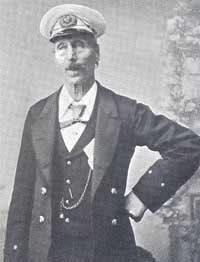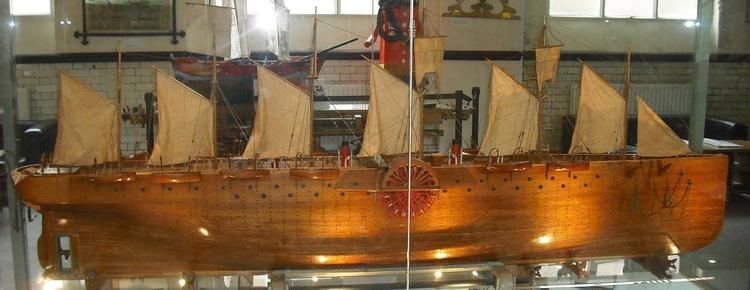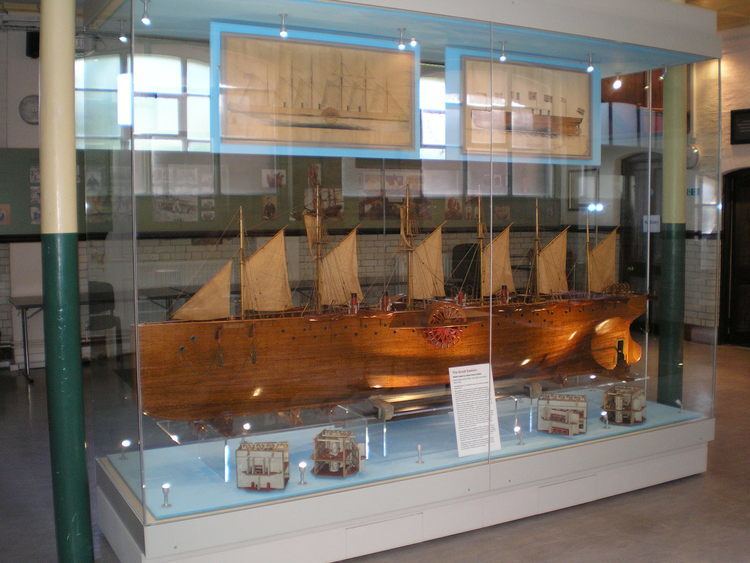Name James Pullen | ||
 | ||
Died 1916, Earlswood, United Kingdom | ||
Savants pl sticos james henry pullen prof manuel lafarga
James Henry Pullen (1835–1916), also known as the Genius of Earlswood Asylum, was a British autistic savant, possibly suffering from aphasia.
Contents
- Savants pl sticos james henry pullen prof manuel lafarga
- James henry pullen 1835 1916
- Childhood
- Earlswood
- Notability
- Legacy
- References

James henry pullen 1835 1916
Childhood

Pullen was born in Dalston, London in 1835, and lived in Peckham, South London. Both he and his brother William were regarded as deaf (presumably he was not in fact deaf, see below[vague - where below do alternative explanations/diagnoses get addressed?]), mute and were developmentally disabled. By the age of 7 Pullen had learned only one word, mother, which he pronounced poorly. As a child, he began to carve small ships out of firewood and draw pictures of them. Pullen was first confined to Essex Hall, Colchester.
Earlswood

At the age of 15, in 1850, he was taken to the then new Earlswood Asylum (later called Royal Earlswood Hospital), in Reigate, Surrey. Contemporary account tells that Pullen could not give any answers through speech, but could communicate through gestures. He could read lips and gestures but never learned to read or write beyond one syllable. Pullen's brother William later followed him to Earlswood; a good painter, he died at the age of 35.
Earlswood Asylum tried to teach its patients a number of handicrafts so they could support themselves and the asylum. Pullen continued his handicrafts and became a gifted carpenter and cabinet maker. He would work at workshop at days and draw at night. Most of the drawings were of the corridors of the asylum and he framed them himself. If Pullen could not find a suitable tool, he would make it himself. In addition he would also make practical items, such as bed frames, for the needs of the asylum.
Pullen was alternatively aggressive or sullen. He could be reserved but also wrecked his workshop once in a fit of anger. He did not like to accept advice and wanted always to get his own way. Once he took a dislike to a certain member of the staff and built a guillotine-like contraption over his door. Luckily for the target, it went off too late. Once, when Pullen developed an obsession to marry a townswoman he fancied, the staff mollified him by giving him an admiral's uniform instead.
Notability
Queen Victoria accepted some of the drawings and Prince Albert received one Pullen had drawn of the Siege of Sebastapol in the Crimean War, based on newspaper accounts. He even attracted interest of the Prince of Wales, future king Edward VIII; Pullen referred to him as "Friend Wales." Prince Edward sent him pieces of ivory so he could carve them. Sir Edwin Henry Landseer sent engravings of his paintings to Pullen and his brother Arthur so they could copy them.
Asylum superintendent Dr. John Langdon Down, for whom Down syndrome is named, gave Pullen a great deal of leeway. For example, he was allowed to eat his meals with the staff.
Pullen's masterpiece is a model ship, a 10-foot long replica of SS Great Eastern, that he started in 1870 and spent seven years building; Pullen made all the details, including 5,585 rivets, 13 lifeboats and interior furniture in miniature, himself. In its maiden voyage the model ship sank for lack of buoyancy but Pullen repaired that flaw later. The model was exhibited in the Crystal Palace.
Pullen also built a large, mechanical mannequin in the middle of his workshop; he would sit inside it, manipulate its face and appendages and talk through a concealed bugle in its mouth.
Legacy
After Pullen's death in 1916, his workshop became a museum of his work until the Royal Earlswood Hospital was closed in 1997. It is now an apartment complex. Pullen's model of SS Great Eastern may be seen, being part of the James Henry Pullen Collection including more of his designs and art work, in the Museum at the Langdon Down Centre, Normansfield, Teddington.
